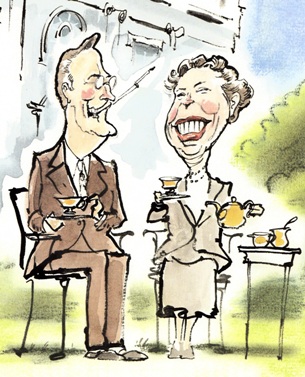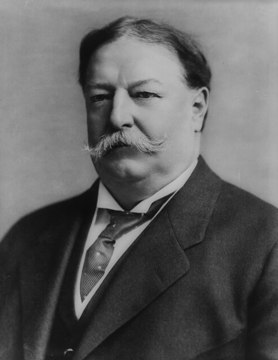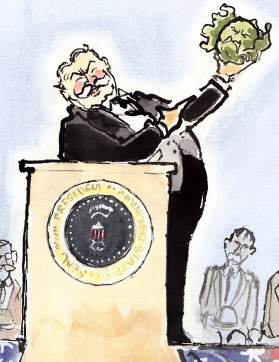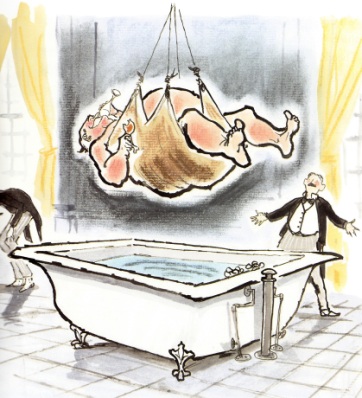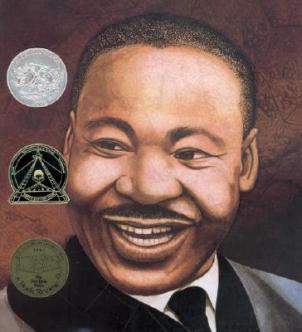In my last post about the odd and enduring picture book legacy of former U.S. President William H. Taft, I mentioned the Caldecott-winning picture book So You Want to be President?, written by Judith St. George and illustrated by David Small. It is seriously one of the best nonfiction picture books about American history that I’ve ever read and, with the 2012 U.S. President Election rapidly approaching, I actually can’t think of a better history book to share with younger kids who are just starting to register the elections on their radar.
So You Want to be President? is not a partisan book AT ALL, which is one of its best qualities. Rather, St. George and Small go out of their way to portray the American Presidents as human beings – much time is spent breaking down the demographic details of the men who’ve made it into the Oval Office.
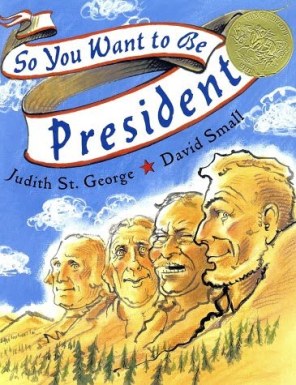
If you want to feel good about the American presidency this election season, this is a great place to start…
For example, the book, structured around the question “So You Want to Be President?”, offhandedly mentions at one point, “You probably weren’t born in a log cabin. That’s too bad. People are crazy about log-cabin Presidents. They elected eight.” We learn a lot about where presidents came from, what they did before they were presidents, and both the good and the bad accomplished in the name of the presidency are acknowledged.
St. George does a fantastic job of creating an engaging, data-driven portrait of the history of the American presidency, while, at the same time, really conveying that call that drives a person to become the President as something ultimately positive and aspirational. To quote St. George, discussing the various presidents:
Some succeeded. Some failed. If you want to be President – a good President – pattern yourself after the best. Our best have asked more of themselves than they thought they could give. They have had the courage, spirit, and will to do what they knew was right.
All that plus the book is a hoot to read and is visually brilliant, thanks to David Small. (We even get to see Nixon bowling!) What more could you want?
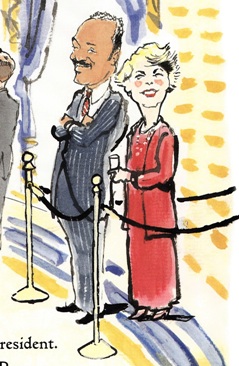
The original edition of “SYWTBP” paid a nice tribute to those who hadn’t made it to the White House yet… at least, not when the book was originally published.
I have just one additional note to add about So You Want to be President? – Be aware that there are several editions of the book currently in circulation. The picture book was originally published in 2001 and it’s been revised twice since then. The first revision (in 2004) worked in information about George W. Bush. There were sections in the original picture book that talked about relatives that became presidents and the number of presidents named “George”, so the revision makes total sense. And, according to Penguin, there was also an even newer revision that has incorporated information about Barack Obama. I find that revision to be particularly significant, not because of my personal politics, but rather because both the original and 2004 editions include a page where St. George informs her readers:
Every President was different from every other and yet no woman has been President. No person of color has been President.
And that page is accompanied by an illustration of Jesse Jackson and Geraldine Ferraro standing in a roped-off section just outside of the oval office. I haven’t seen the new edition – my library only has the original versions – so I’m not sure if Ferraro is now all alone in that waiting area, but I’m definitely pleased to have one less person waiting in the wings to one day make it to the White House.
If you’re interested to learn more about So You Want to be President?, watch this clip from the great Weston Woods animated version of the book (narrated by Stockard Channing) and consider reading it with your children before November 6th. You won’t regret it.
(If you can’t see the video due to Flash issues, click here to see it. You can also find a much longer, less interesting video read-through of the entire book here.)
{ 3 comments }
